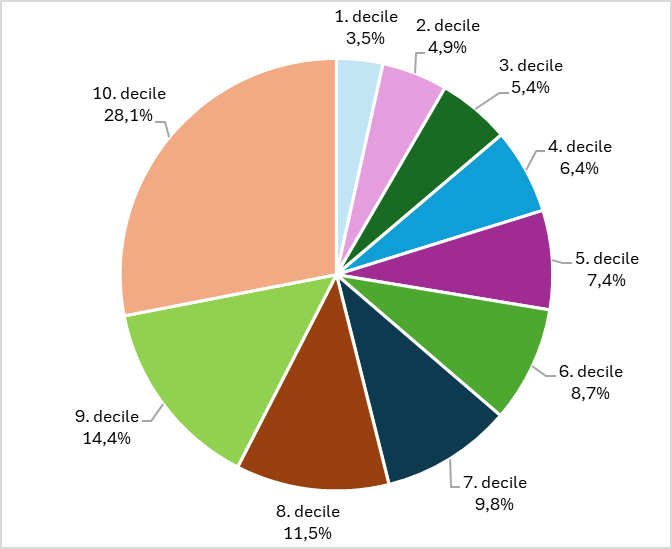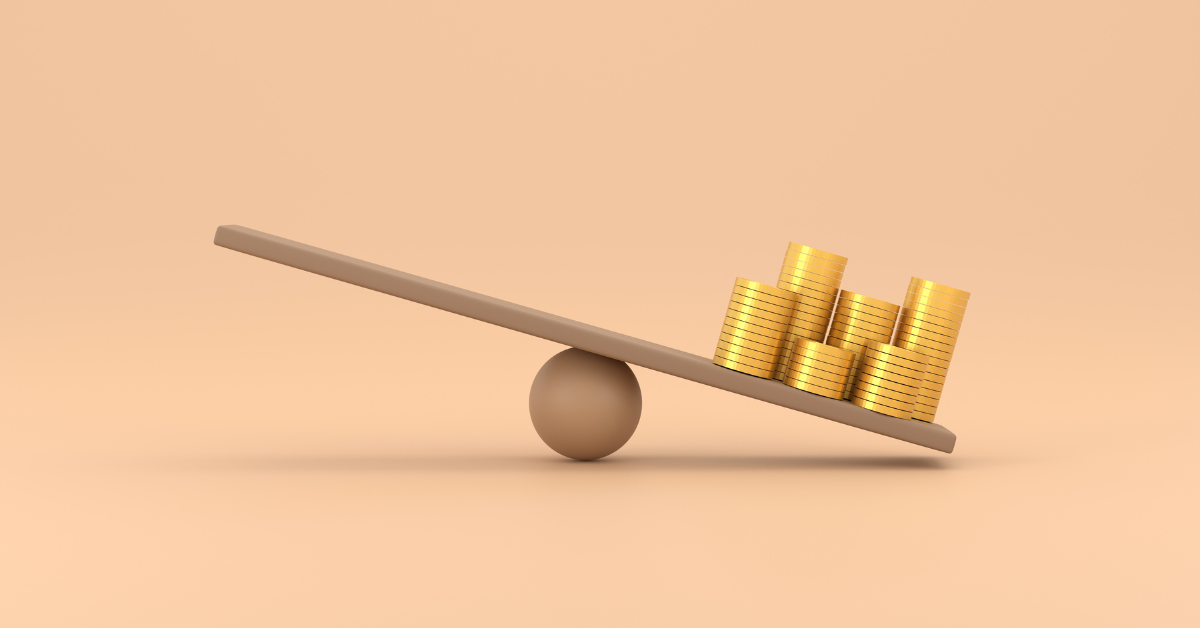According to data obtained by Portfolio from the Hungarian Central Statistical Office (KSH), 66.5% of Hungarian employees earn less than the gross average wage. This highlights how strongly the average is skewed by high earners at the top of the income distribution.
Building on this data, GKI Economic Research Co. calculated how each income decile contributes to the total wage pool. The results reveal stark inequalities: the bottom 10% of earners account for just 3.5% of total earnings, while the top 10% take home 28.1%—an eightfold difference. In fact, the top 10% of full-time employees have more income in total than the entire bottom 50% combined.
Even more strikingly, the second-highest decile earns as much as the bottom three deciles put together, and the top decile earns twice as much as the second-highest group. Inequality isn’t just a matter of extremes: someone in the second-lowest income decile earns half as much as someone in the sixth.
Distribution of total earnings by income decile

(Source: Portfolio, based on KSH data and GKI calculations)
While such extreme disparities raise broader questions of fairness, they also carry macroeconomic consequences. A fundamental principle in economics is that lower-income individuals tend to spend a greater proportion of their earnings, while higher earners are more likely to save. As a result, widening income inequality can have a negative impact on retail turnover and on other consumption indicators.
In 2024, the minimum wage increase led to higher percentage growth in earnings for the bottom decile than for the top decile (15% and 10%). However, in nominal terms, the gap between the highest and lowest earners continued to widen. Compared to 2023, the lowest earners saw their gross monthly income rise by 29,500 HUF, while those at the top of the income ladder gained an additional 166,600 HUF per month.
This means that the bulk of nominal wage growth was concentrated at the top of the income distribution, where the savings rate tends to be significantly higher. Beyond issues of social fairness, income inequality has a dampening effect on domestic consumption, as a smaller share of income reaches those who are more likely to spend it.







